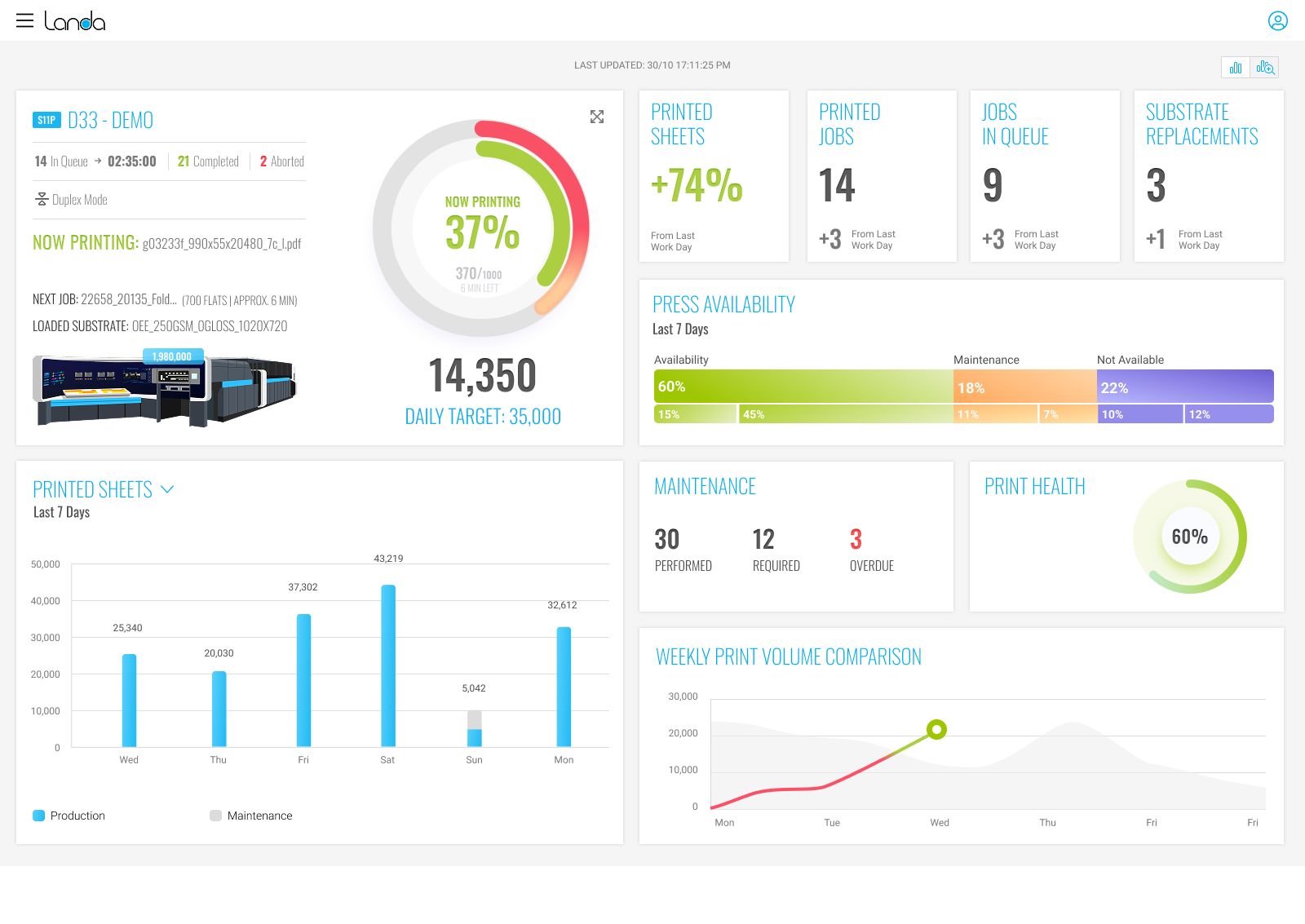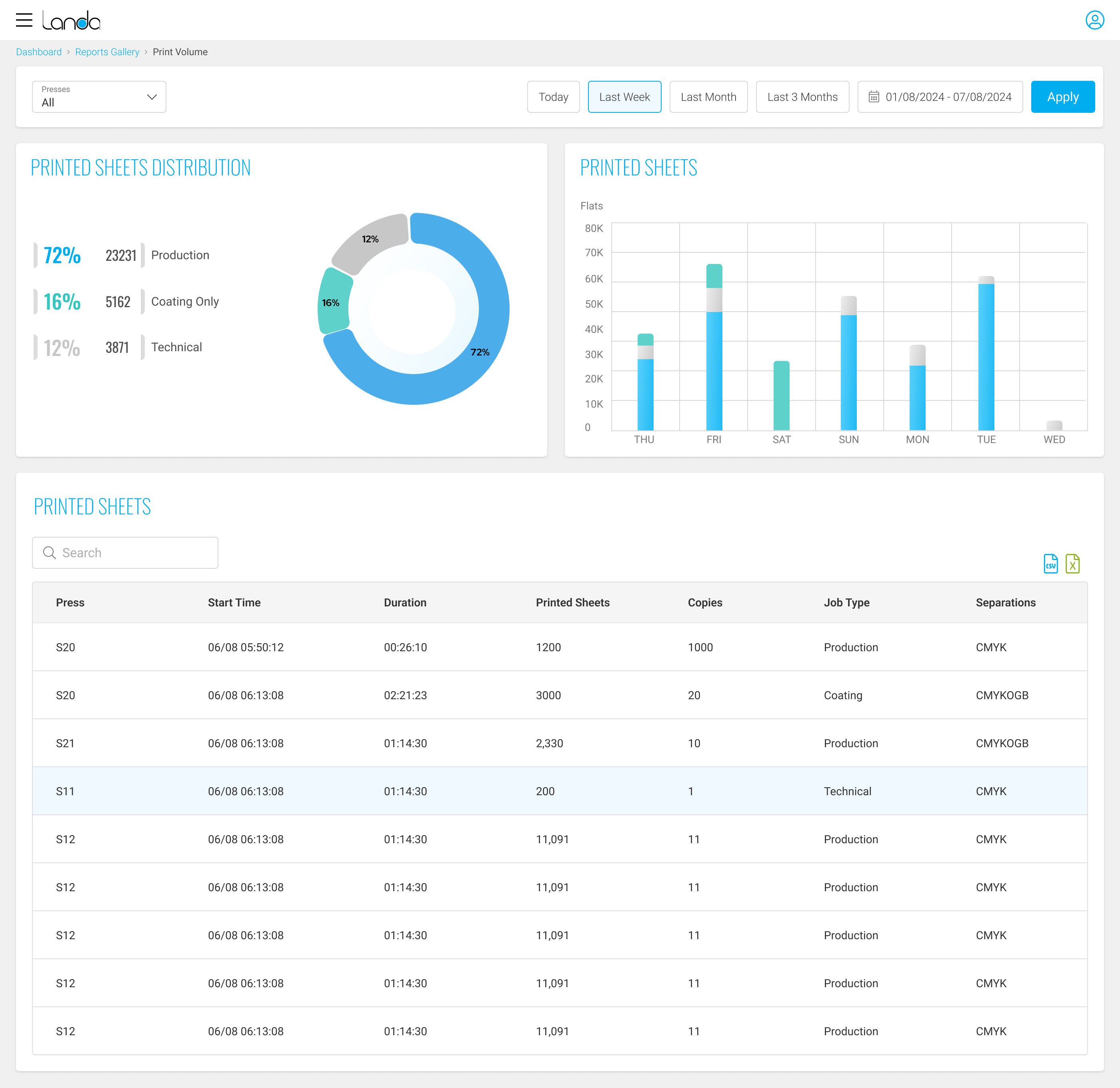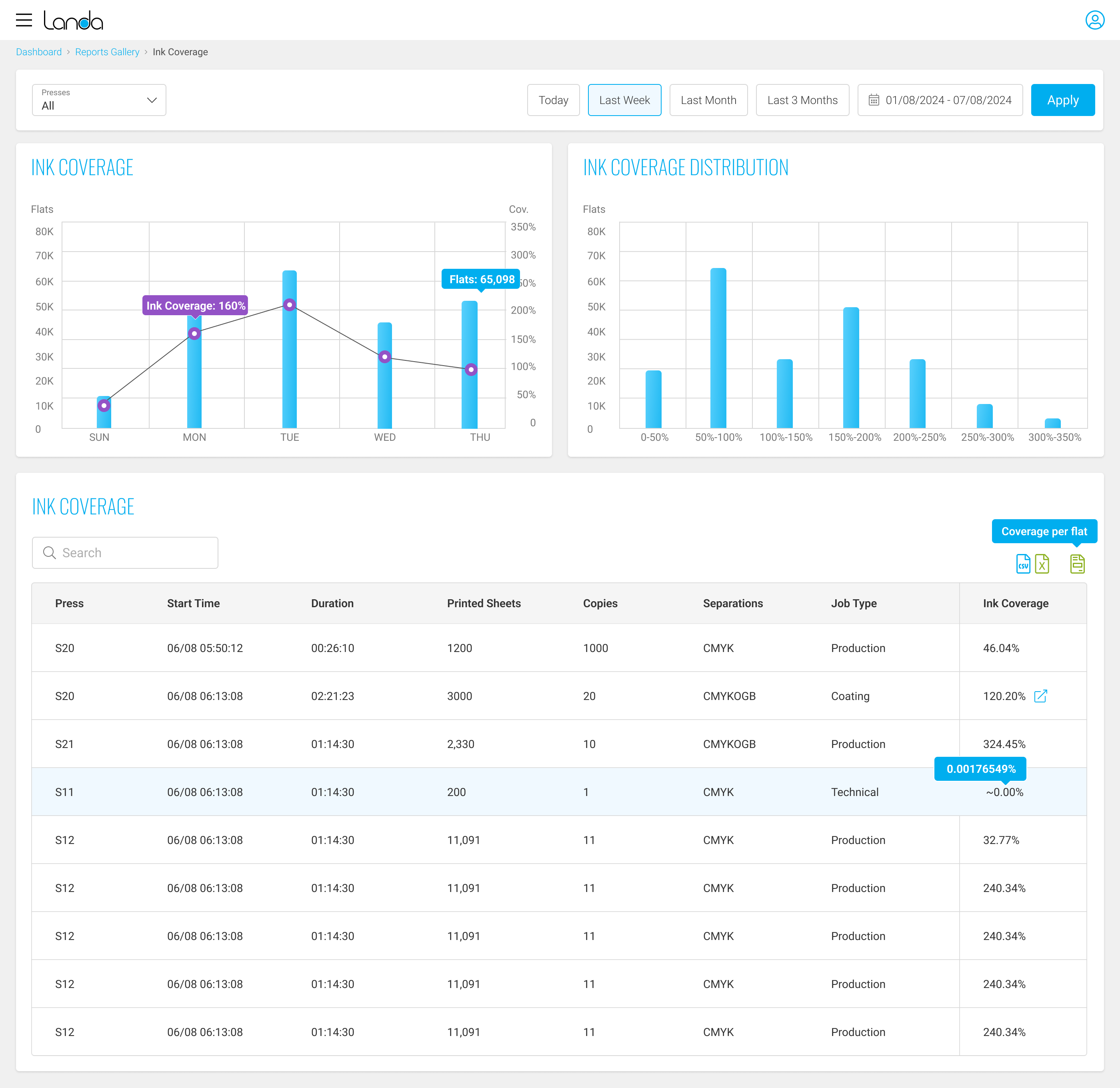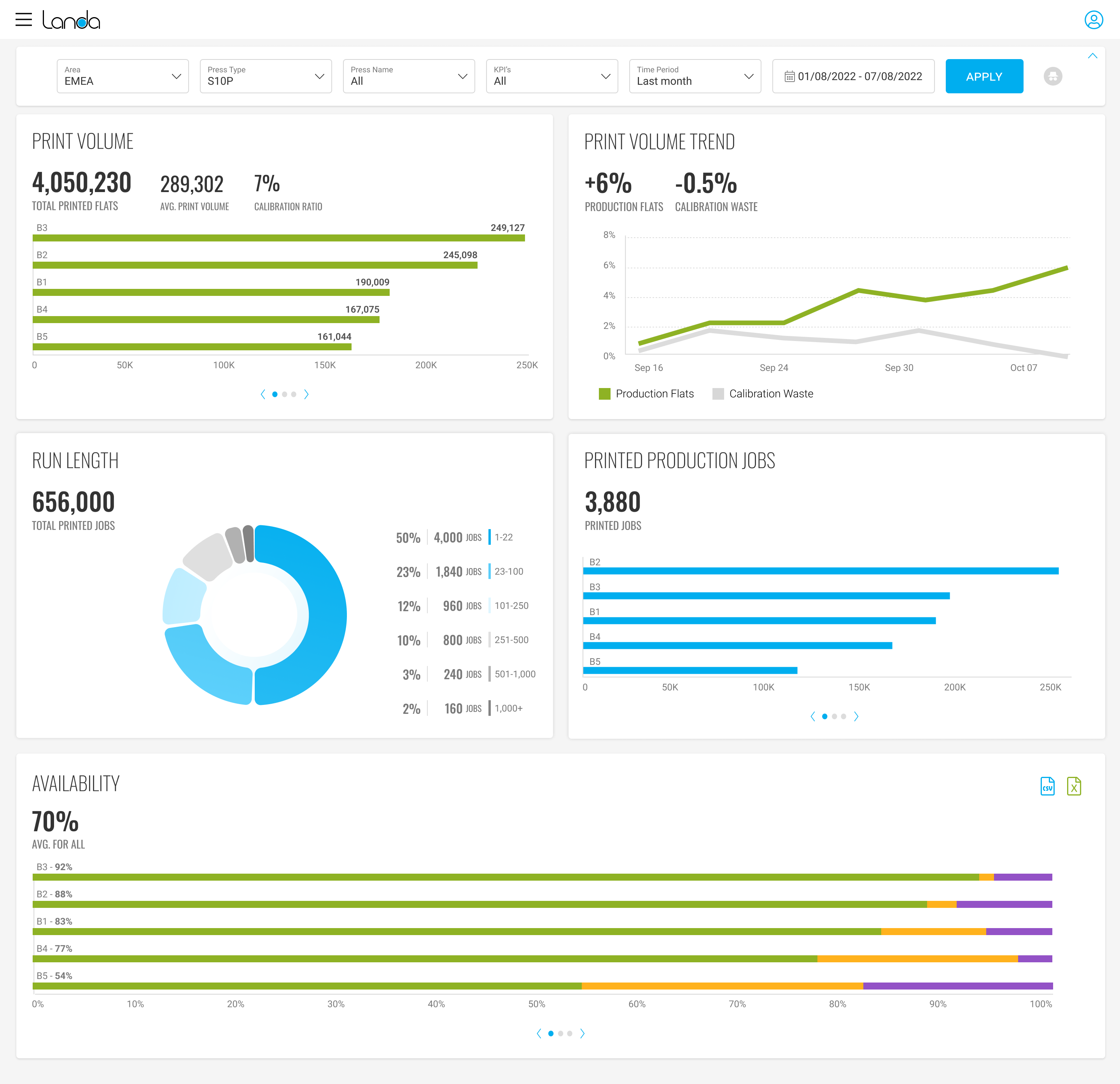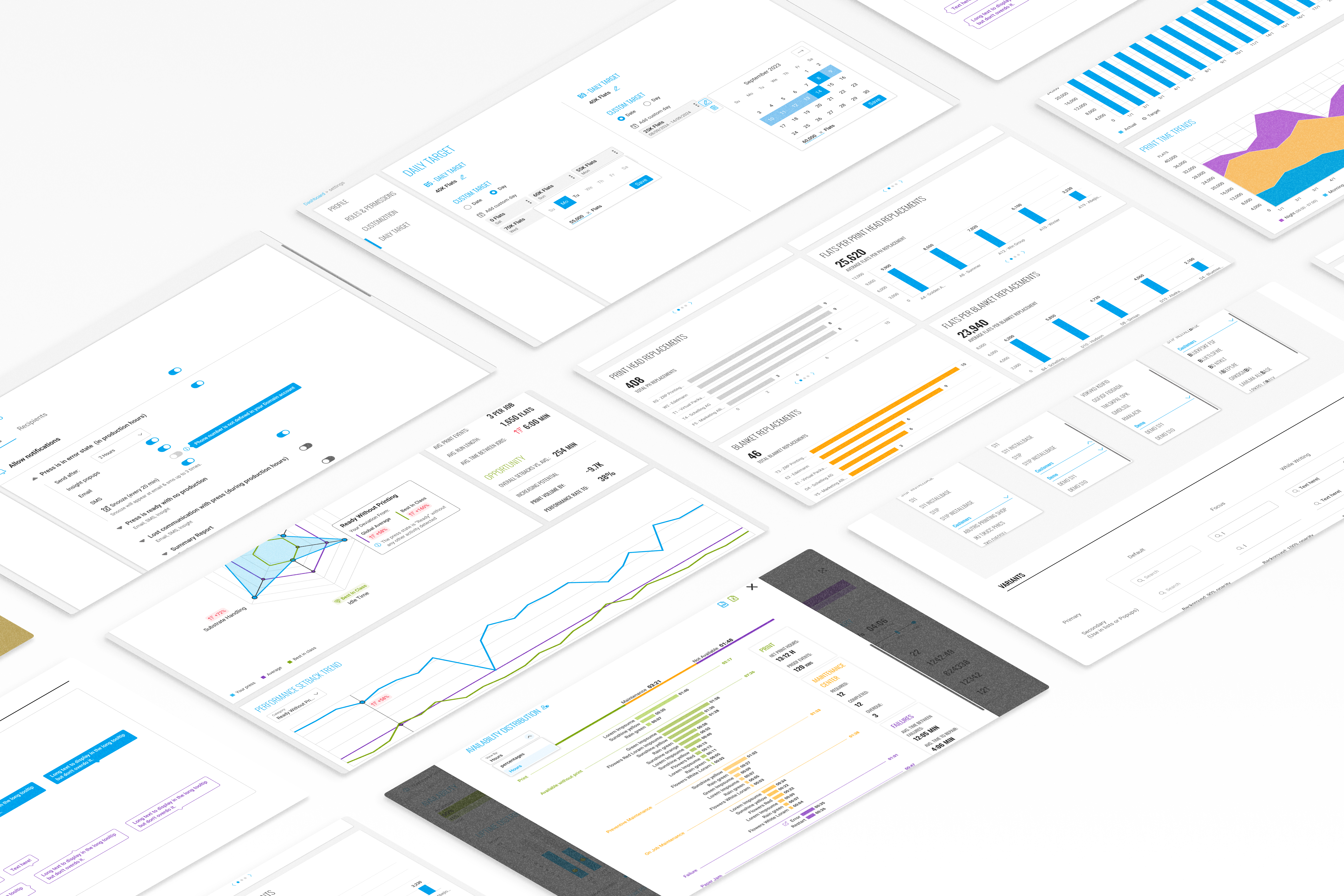Data Complexity and Usability
One of the major challenges was designing an interface that balanced the need to display a Vast amount of data with the requirement for simplicity and usability. The challenge was determining how to present all this data in a clear way, while still making it actionable and useful for different user types. Striking the right balance between depth of data and ease of use was crucial.
Real-time Data Handling and Performance
The platform needed to handle large volumes of live data coming from multiple printing presses at once, with real-time updates. Ensuring the data Loaded quickly, without lag or delays, while maintaining a seamless user experience, proved to be a significant challenge.
Customization for Different User Roles
Different users had different needs. Designing a flexible interface that could address these distinct needs, Without overwhelming the user with irrelevant information, was a key challenge.
Ensuring Data Accuracy and Integrity
Given that the platform relied on real-time data from physical machinery, ensuring integrity of this data was crucial. The challenge was to design a system that could handle edge cases, like temporary data dropouts or server issues, without compromising the reliability of the information being presented to the users.
Visualizing Complex Data Trends
Some of the historical data trends were highly detailed and required sophisticated visualization tools. Designing graphs and charts that effectively conveyed the complexity, While still being easy to interpret was a tough balance. We had to think creatively about how to present long-term trends and real-time data in ways that weren't just "pretty" but actionable.
